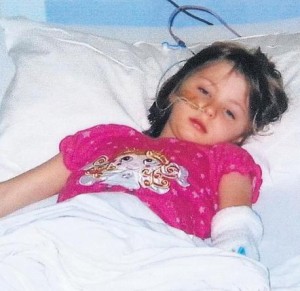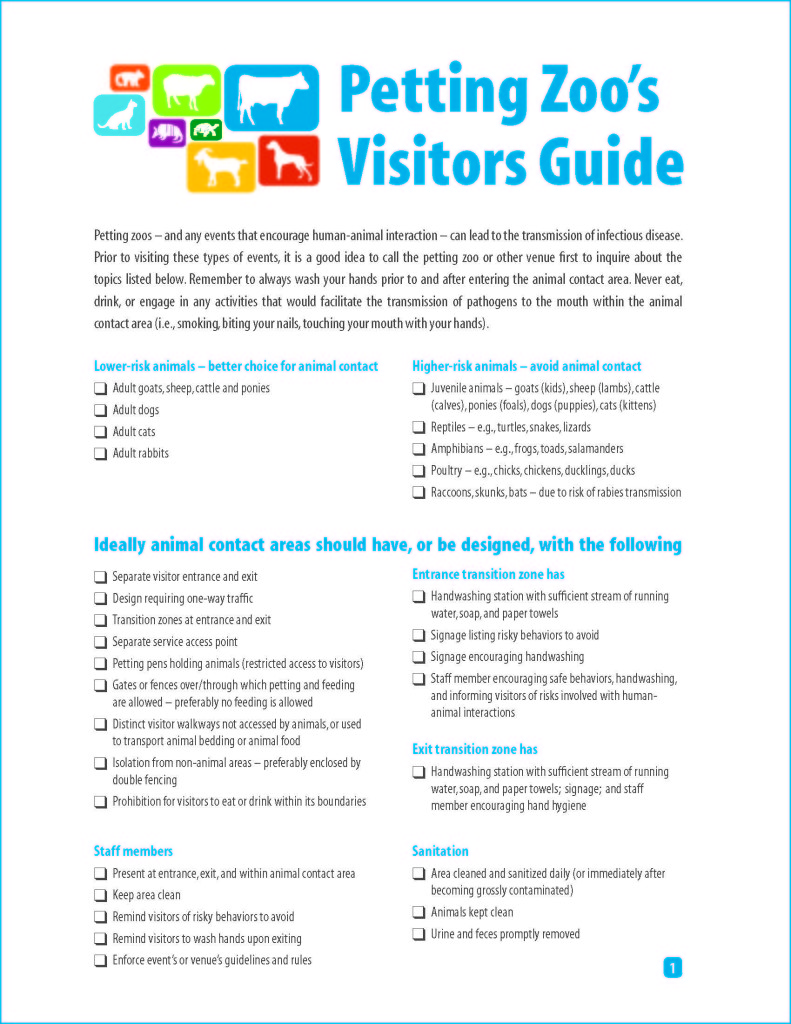Claudia Erskine was seven-years-old when she fell critically ill just days after visiting Godstone Farm in 2009.
The Argus reports that Claudia, now 11, was one of 76 children under the age of 10 who contracted E. coli O157 at the farm.
 The families who were worst affected by the outbreak settled their damage claims with the farm in court earlier this month.
The families who were worst affected by the outbreak settled their damage claims with the farm in court earlier this month.
Claudia’s mother Lucy, 39, told of how “no amount of money in the world” would offset the fact her daughter has to live with the health effects of what happened.
She said it was the “darkest period” of her family but added they were determined to raise awareness of the infection.
The mother-of-three said: “Having lived through the dreadful effects that it had on our family, and nearly losing our little girl as a result, we would ask other parents to think twice before taking children to petting farms.
“I sat vigil by her bedside, terrified and not knowing whether she would have the strength to pull through.
“It seemed impossible to us that our little girl, who had been happy and healthy just a few days before, was now lying in a hospital bed fighting for her life – and all because of a day out at Godstone Farm.”
Claudia was left hospitalised for three weeks, pulling through in what her mother called a “miracle”.
Claudia’s siblings, Niall, six, and Evan, 15-months, also contracted the disease but recovered.
Jill Greenfield, of the law firm Field Fisher Waterhouse, said: “It is tragic that these young children were allowed to skip into this farm completely oblivious to the danger that awaited.”
For information about keeping safe from E. coli go to: hse.gov.uk/campaigns/ farmsafe/ecoli.
And these outbreaks inspired some of our work. Handwashing is never enough.
Best practices for planning events encouraging human-animal interactions
Zoonoses and Public Health
G. Erdozain , K. KuKanich , B. Chapman and D. Powell
http://onlinelibrary.wiley.com/doi/10.1111/zph.12117/abstract?deniedAccess
Educational events encouraging human–animal interaction include the risk of zoonotic disease transmission. It is estimated that 14% of all disease in the US caused by Campylobacter spp., Cryptosporidium spp., Shiga toxin-producing Escherichia coli (STEC) O157, non-O157 STECs, Listeria monocytogenes, nontyphoidal Salmonella enterica and Yersinia enterocolitica were attributable to animal contact. This article reviews best practices for organizing events where human–animal interactions are encouraged, with the objective of lowering the risk of zoonotic disease transmission.



 In Sept. 2009, Godstone Farm petting zoo in the U.K. was shut down by health types after being linked to 93 confirmed cases of E. coli O157 amongst visitors,
In Sept. 2009, Godstone Farm petting zoo in the U.K. was shut down by health types after being linked to 93 confirmed cases of E. coli O157 amongst visitors,  The Health Protection Agency (HPA) said on Tuesday that the total number of E.coli cases linked to Godstone Farm still stood at 93, adding that "all children have been discharged from hospital."
The Health Protection Agency (HPA) said on Tuesday that the total number of E.coli cases linked to Godstone Farm still stood at 93, adding that "all children have been discharged from hospital.".jpg) The Health Protection Agency (HPA) said the total number of E.coli cases linked to Godstone Farm had risen to 67.
The Health Protection Agency (HPA) said the total number of E.coli cases linked to Godstone Farm had risen to 67.